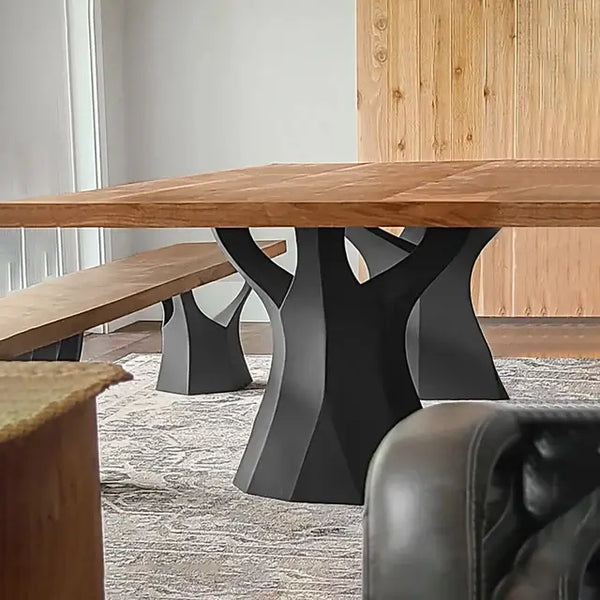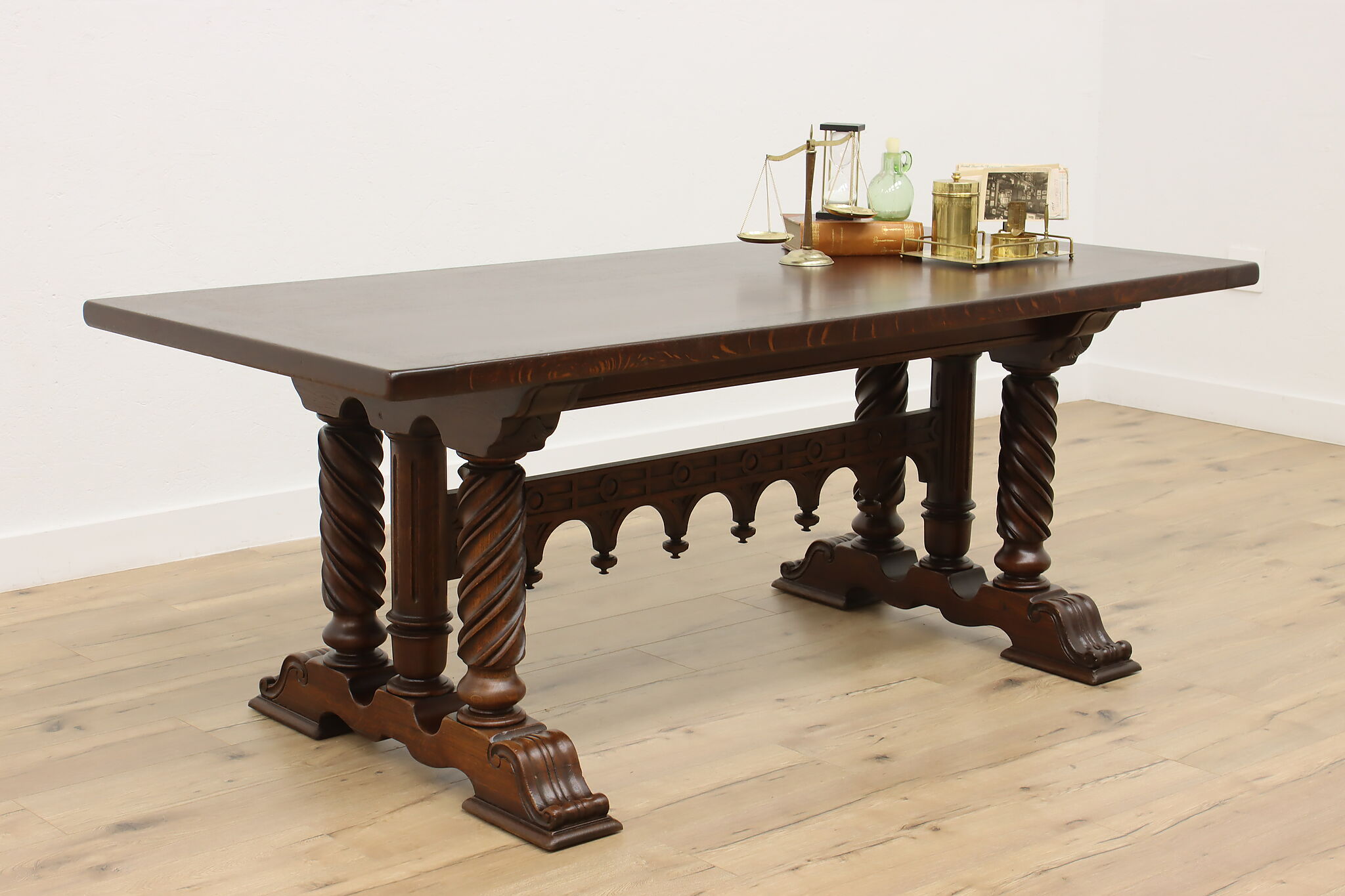Transform Your Dining Space with Stylish Dining Room Table Legs
Transform Your Dining Space with Stylish Dining Room Table Legs
Blog Article
From Traditional to Modern: Find the Suitable Dining-room Table Legs for Your Style
While timeless styles such as cabriole and turned legs evoke a feeling of classic class, contemporary designs like barrette and geometric options provide an opportunity for striking aesthetic rate of interest. As you think about these aspects, the inquiry stays: how can you seamlessly incorporate these varied leg designs to produce a harmonious eating experience?
Understanding Table Leg Styles
The selection of dining space table leg styles can significantly affect both the aesthetic appeals and capability of the space. Each leg design contributes distinct visual elements and useful features, dealing with diverse layout choices and usage requirements. Understanding these styles is vital for choosing the best dining table that aligns with your overall interior decoration vision.
For circumstances, conical legs offer a clean, timeless look that can boost a room's sophistication, while stand bases give stability and make the most of legroom, making them ideal for smaller sized rooms. Hairpin legs, a hallmark of mid-century modern-day style, present an industrial panache, permitting for a ventilated, open feeling. Similarly, trestle legs stimulate rustic beauty, offering durable assistance and a feeling of eternity.
In addition, the option of materials plays a significant role. Wood legs can bring heat and structure, whereas steel choices typically share a streamlined, modern vibe. Inevitably, understanding table leg styles is necessary for developing a cohesive dining location that mirrors individual style while making sure usefulness and comfort. By thoughtfully considering these elements, you can improve both the aesthetic and functional appeal of your dining space.
Typical Table Leg Options
When picking dining space table legs, standard alternatives typically personify ageless style and workmanship. These styles show an abundant heritage and a commitment to high quality, making them optimal for those who value traditional visual appeals.
One of one of the most legendary conventional leg styles is the cabriole leg, identified by its elegant curved shape. This layout commonly includes decorative carvings and is most frequently found in Queen Anne and Chippendale furniture. One more prominent alternative is the turned leg, which flaunts a series of smooth, rounded forms that provide a classic appearance while maintaining stability.
In addition, the straight leg, while simple, uses a unadorned and tough framework that can blend seamlessly with a range of tabletop designs. For those attracted to ornate detailing, claw-and-ball feet legs stimulate a sense of grandeur and can function as a magnificent prime focus in any dining room.
Finally, stand bases, although not purely legs, supply an alternative typical alternative that permits sufficient legroom and can be wonderfully sculpted. Each of these typical leg designs adds to the overall setting of a dining-room, marrying function with aesthetic appeal.

Modern Table Leg Layouts
Modern table leg layouts use a diverse variety of styles that stress ingenious materials and clean lines. These styles typically focus on capability while acting as striking prime focus within an eating area. Minimal appearances are common, with legs crafted from products such as metal, glass, and engineered timber, which add to a contemporary and ventilated feeling.
One popular style is the hairpin leg, characterized by its slim, tapered framework that supplies stability without frustrating the table top (dining room table legs). This design is frequently discovered in mid-century modern furniture and can easily complement various table shapes. An additional trend is the usage of geometric forms, where legs might handle angular or unbalanced types, adding visual rate of interest and a touch of artistry

Mixing Styles for One-of-a-kind Areas
Usually, home owners look for to produce distinct dining spaces that mirror their personal style by blending numerous layout elements. This technique permits for the incorporation of varied aesthetic appeals, leading to an unified yet distinctive setting. Matching a rustic wooden table with streamlined, modern metal legs can produce an eye-catching contrast that elevates the room's overall allure.
Furthermore, integrating vintage table legs with modern table tops can stimulate a feeling of background while maintaining a contemporary sensibility. Such check out here mixes not just showcase individual taste yet additionally urge creative thinking, allowing house owners to curate a space that really feels both personal and inviting.
Color plays a critical role in this blending procedure; picking table legs that enhance or contrast with the existing color pattern can boost visual rate of interest. Whitewashed legs can soften the daring of a dark table surface area, developing a well balanced visual.
Tips for Picking the Right Legs
Selecting the right table legs is vital for achieving both capability and aesthetic charm in your dining room. Begin by considering the total design of your area. Typical settings benefit from legs that feature intricate carvings or transformed designs, while modern rooms may ask for smooth, minimalist styles.
Next, assess the height and security of the link legs. dining room table legs. Common table vary between 28 to 30 inches in elevation, so ensure the legs enhance this dimension for comfort. In addition, robust materials, such as wood or steel, can enhance stability and durability
Assess the leg form too-- alternatives consist of directly, tapered, or pedestal layouts. Straight legs use a classic appearance, while conical legs can include a touch of elegance. Pedestal bases give adequate legroom and are optimal for smaller rooms.
Final Thought
In recap, selecting the excellent dining space table legs needs cautious factor to consider of both typical and contemporary styles. Traditional alternatives such as cabriole and turned legs supply timeless beauty, while contemporary layouts like hairpin and geometric forms offer a modern touch. By harmonizing leg design, height, and product with the total décor, a cohesive and inviting environment can be achieved. Ultimately, the selected table legs ought to mirror the wanted visual, boosting the dining experience within the room.
The selection of dining area table leg styles can significantly affect both the visual appeals and performance of the area. Inevitably, recognizing table leg designs is important for creating a natural dining area that shows individual design while making certain usefulness and convenience.One of the most renowned standard leg designs is the cabriole leg, identified by its graceful rounded shape. Straight legs supply a classic look, while tapered legs can include a touch of elegance.In summary, selecting the optimal eating room table legs calls for cautious factor to consider of both conventional and modern-day styles.
Report this page